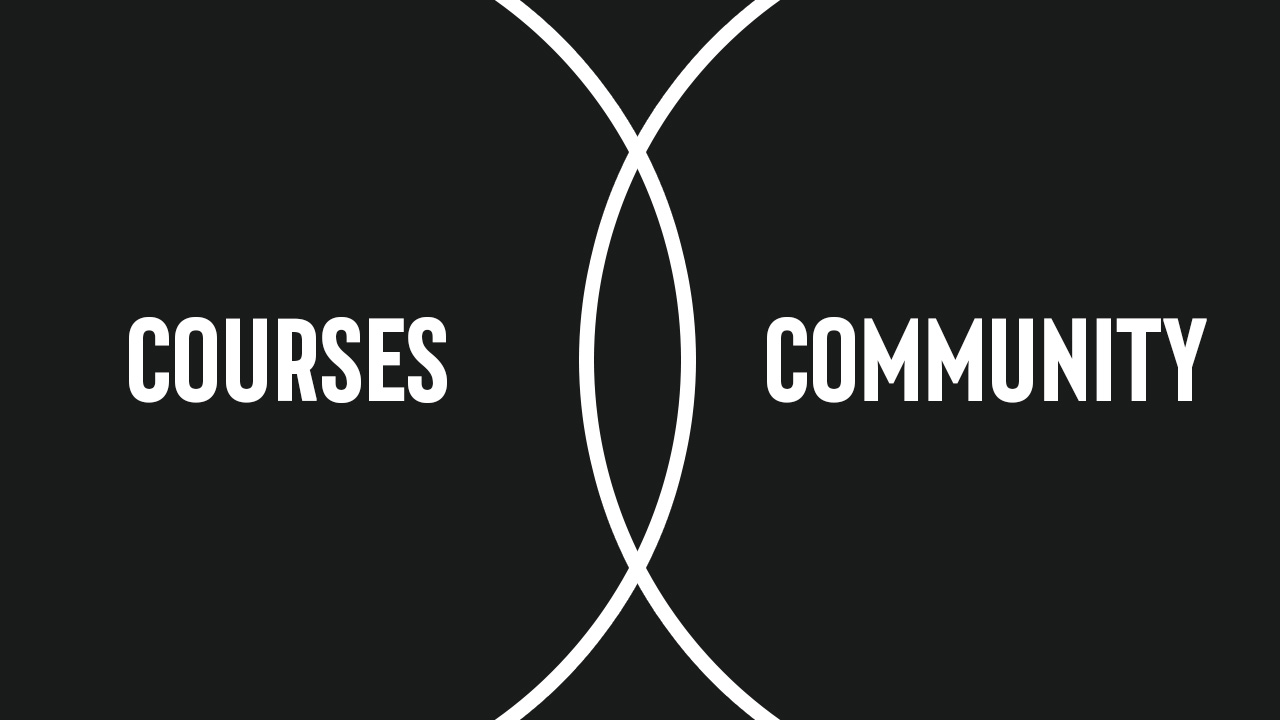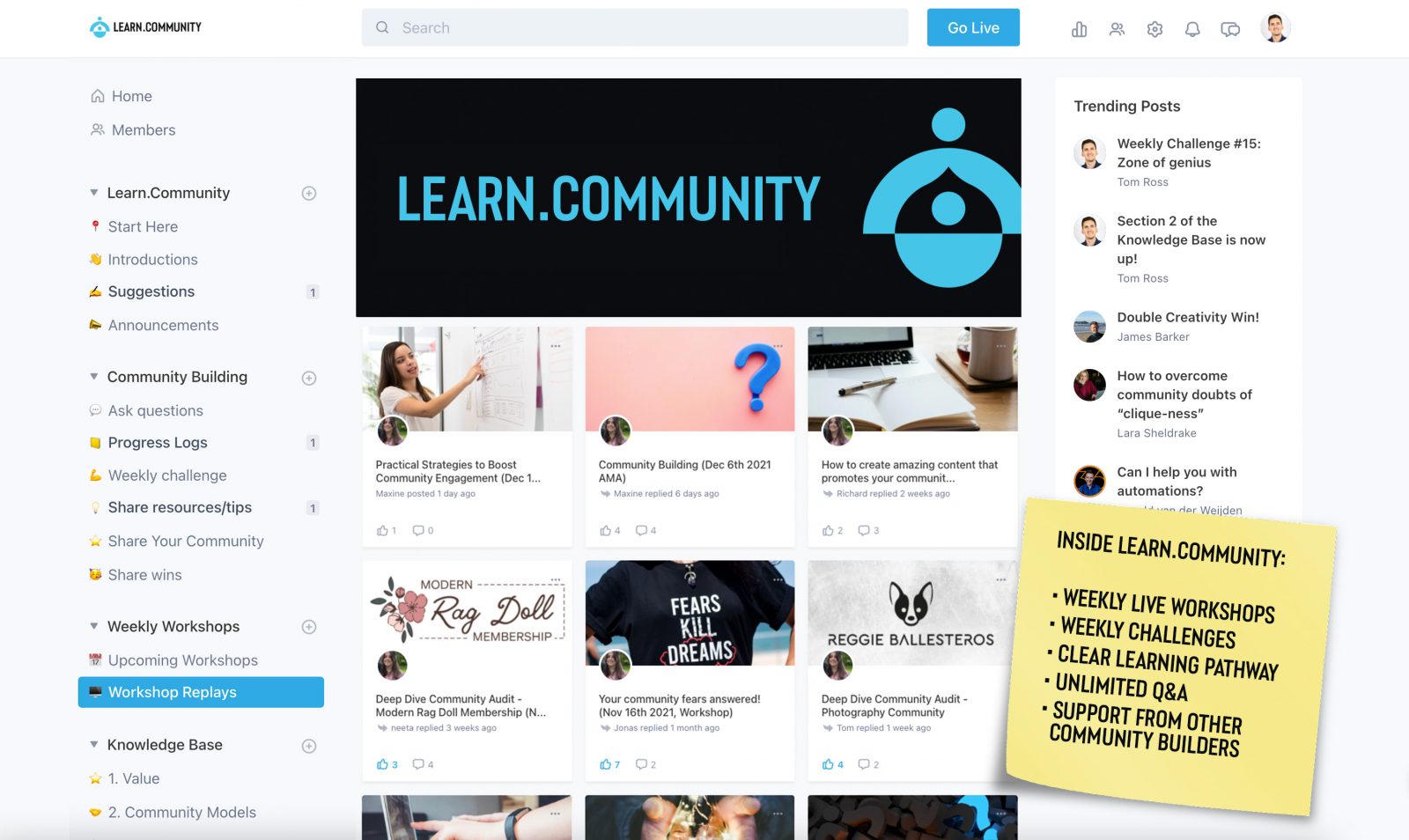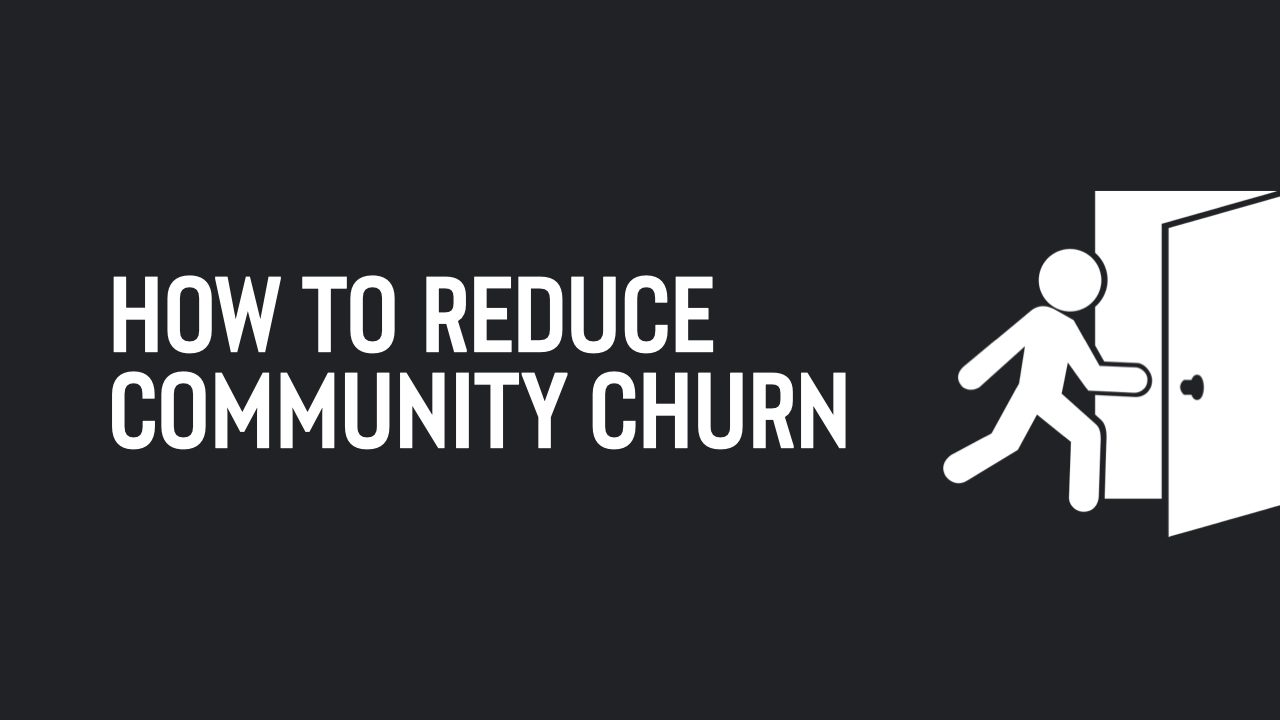
I truly believe that community is the future for online courses.
The typical model for online courses has always been passive consumption.
You buy a course. Download or stream it. Watch the course. That’s it.
But times they are a changing!
Online courses and community are becoming one
Everyone from huge companies to solopreneurs are leaning into community focused courses.
Some of the biggest course marketplaces like Skillshare are now encouraging instructors to engage in more of a community capacity with students. Instructors who embrace community are actively being promoted more.
Most large course platforms like Kajabi are now investing heavily into building out community products for their customers.
Course platforms realise the tremendous benefits that a community element can lend an online course.
That’s why they’re pursuing this approach with their teachers and core product features.
But it’s not just big companies. Independent course instructors are increasingly leveraging the power of community to enhance their online courses.
Platforms like Circle (my platform of choice) now offer a unified community/course experience. Previously, this would have been far more fragmented, with students consuming a course on one platform, and then jumping to another to enjoy the community element. Now platforms like Circle bring the entire experience into one place.
This merging of online education and community is something that in my opinion, will only increase.

So why does community matter for online courses?
Traditional online courses are broken
Data shows that traditional courses (passive consumption) have a low completion rate. Students often sign up – excited, then get bored, have a change of heart, or don’t see the course through.
This means reduced student satisfaction, higher refunds and an overall poorer experience.
Community focused courses are more effective
Community courses on the other hand have shown to consistently increase completion rate and engagement from students.
When students feel like they’re learning WITH the instructor, as well as fellow students, they feel measurably happier, more motivated and feel that the course material has better served them.
It’s pretty easy to see why community feels so valuable for course students.
Community courses add more value
Community is essentially adding an extra layer of value.
If the videos and instructor teaching is the initial value, then interaction with students, assignments, accountability groups etc… all brings a tremendous amount of additional value.
With added value, comes opportunity
Whilst this does represent more work for course instructors, there is also opportunity.
A community focused course is more attractive to prospects and should convert better.
When students receive more value, they’re also more likely to pay more.
Plus there’s something incredibly rewarding about actually interacting with students and supporting their success.
In this respect, online courses are reverting back to more of an IRL model. If we take an in-person course locally, we aren’t just given a set of videos to watch at home. We learn from the instructor more directly. We learn alongside other students as a collective. There’s the ability to learn from and befriend our fellow students.
How can you add community to your online course?
Don’t just dump course students into a group
A traditional course/community approach involved dumping course students into a Facebook group.
That’s fine, but community typically requires more structure and strategy than that. It shouldn’t be an after-thought, it should be woven into the very DNA of your course.
Consider community programming and events
A great way to bring together your students is regular events or community programming.
For example – a weekly Office Hours allows students to get help with sticking points from your course.
Sprints, homework or challenges allow students to focus on course-led outcomes together, and be inspired by each other’s work.
Perhaps as some students progress and up-skill, you can facilitate them helping, mentoring and inspiring newer students.
Prompt action from course students
A great way to frame this is ‘action’ over ‘consumption’. You don’t want your students just passively watching your course. You want them taking action (preferably as part of a group). Try to think of prompts that you can weave into your course lessons, that will encourage them to share in a community setting.
Alongside helpful community programming, provide a platform where students can ask/answer each others questions, share wins and update with their progression.
Cohort courses vs evergreen courses
As I’m creating our flagship Community Course for Learn.Community, I’ve done considerable research into cohort courses versus evergreen courses.
Both models can prove effective, and both come with pros and cons.
The pros of cohort based online courses
Cohort courses can be a powerful experience.
Every student starts and works through the course at the same time.
Often the course can be delivered in a live setting.
Engagement is super high, as is the sense of togetherness that students experience.
For the organiser, it’s intense, but also structured. You can celebrate milestones. Host a launch party. Celebrate the course wrapping up. All of these give ample opportunities for engaging and delighting your students.
The cons of cohort based online courses
However, cohorts are exhausting. You feel in ‘launch mode’ for weeks. Typically, this means that educators using the cohort model have gaps to recover between their cohorts. I believe Marie Forleo only runs her B School course once per year.
This is fine if you have a proven track record and huge audience, but for most of us, a single annual cohort presents a high degree of risk. If the cohort doesn’t produce enough revenue to cover our year – we’re in trouble.
Similarly, I’ve spoke with cohort course creators who will burn out and crash following a cohort – even if they loved it.
There’s also the consideration that the open/close nature of a cohort means that many people who are eager to learn from you will miss out, during your ‘closed’ periods.
Evergreen online courses
For these reasons, I’m opting for an evergreen open model. I’m recording my course once, then making it available via Learn.Community forever. Members can join anytime and take the course at their own pace.
Whilst this will lack the intensity and togetherness of a cohort, it feels far more sustainable for me personally.
It also means that I can keep my community open to potential members year round.
A downside is that students will join at different times, and so will be at different stages of the course.
To help encourage a sense of togetherness, my community will offer regular live events and programming for students. They’ll be able to connect, ask question and get the help they need, no matter what stage of the course they’re at.
How will your incorporate community into your next course?
I hope that this guide on the future of online courses and community has been helpful.
I truly believe that weaving community into your next course will give you and your students the greatest chance of success.
Join our private community for community builders
Connect with like-minded community builders and make real progress with your online community. Learn.Community offers an active forum, weekly workshops and a complete learning pathway.







